Sand Valley, Sun-n-Dale

Mike Keiser once said the property at Sand Valley reminded him of a combination of Pine Valley, Sand Hills and Sunningdale.
Talk about raising expectations.
Intimate knowledge of those courses isn’t required to appreciate this rare environment of barren sand, monstrous dunes and orbital pine forests that accounts for Sand Valley. In fact you need no knowledge of any other top course to realize this is one of golf’s special places.
The landscape now surrounding Sand Valley, once packed wall to wall with pulp pine, is neither completely treeless (Sand Hills) nor, as Pine Valley has become, compartmentalized by them. The comparison to Sunningdale, or at least to sandy pre-sylvan London-area heathland courses of yore, feels the most intriguing.

Here in central Wisconsin, selectively remaindered sections of wood are staged throughout the design with holes diving into and out of a spartan copse here and there, but generally the timber is kept out of frame to set up big views across the property.
To consider Sand Valley is to consider the routing and placement of the holes. Routings are, after all, the outlines of journeys. They are a form of storytelling, the framework within which the author tells the tale. Through routing, artistic decisions are made about pacing, direction and intensity. How the holes sequence and unspool across a site can reveal as much about the character of the architect as the character of the land.
The decisions Bill Coore and Ben Crenshaw made at Sand Valley are emblematic of the choices they’ve made throughout their career together. Sand Valley tells us, in one mesmerizing expression, everything we need to know regarding the way they think about golf.
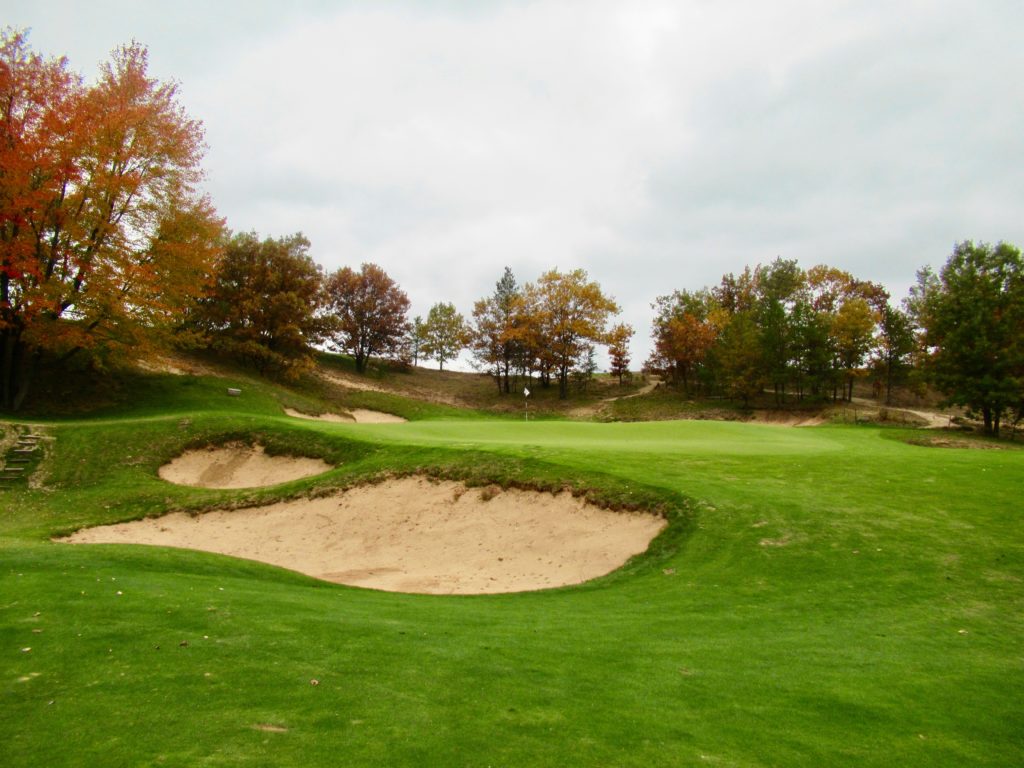
The property Keiser purchased near Nekoosa totals nearly 10,000 acres, and Coore had nearly all of it to consider for the first course. Architects and designers often say that limitations can lead to great results — problems inspire innovative solutions, necessity being a mother, and all that. But what about when the problem is an utter lack of limitations? How does one even approach the task of placing just 18 holes across some 15 square miles of excellent, sandy earth?
Perhaps this is why Keiser — and others — continue to call on the Coore/Crenshaw team: nobody in golf — perhaps no one in the history of golf — has been better at handling such ecstatic but unwieldy properties like Sand Valley. And not many have a better nose for identifying the kind of ground that produces sublime golf. Or how to exactly maximize — and only exactly — what’s needed.
The Sand Valley site possesses a range of topographical features: gentle inclines and drifts, rippled terrain, washes and depressions, steep dunes and flatter, calmer areas. It’s a good bet that many architects, sensing the nearly unparalleled dramatic potential of the land, would attempt to showcase all of it, stuffing as much as possible into the box.
Coore and Crenshaw have never operated that way. If there’s an error to be made, it will usually occur on the side of subtlety, omission. More likely, they took due notice of the geological fireworks and saw in them…distraction.

The areas they selected for Sand Valley’s holes, compared to what was available, are quiet and broad with relatively scaled down shapes. The first two holes, par fours, ramble across a series of perpendicular ridges, dropping before climbing to perched greensites. But from there the course begins to stride out across soft shoulders and burbling links-like features with only a few notable elevation shifts (like the downhill 5th and uphill 8th, both par threes).
In showing restraint in the routing process, Coore and Crenshaw make the case, as they’ve done consistently for the last 30 years, that shy rhythms of slopes and cants that connect to greens placed in saddles or atop high points comprise a greater a foundation for golf than operatic landforms that might be more visually impressive.
A hole like the par-4 6th, where a simple diagonal trough in the fairway creates larger strategic dilemmas, verifies the conviction. Drives that challenge a large spread bunker on the left will bound forward into a lower garden spot leaving a fairly direct second shot, while protective drives to the open right hand section of the fairway are redirected, leaving a safe but longer approach and poorer angle.
At the instant-classic par-5 7th, wide swales in the fairway are just deep enough to create awkward stances and obscure forward landing areas, resulting in confusion about the size and distance of hazards.
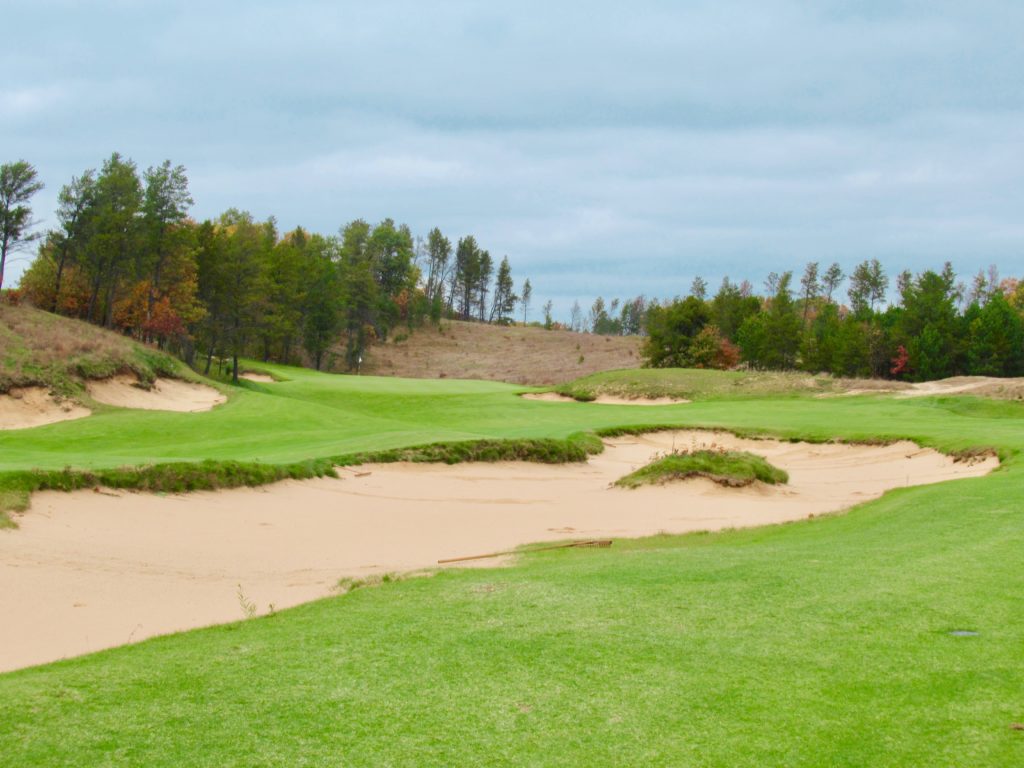
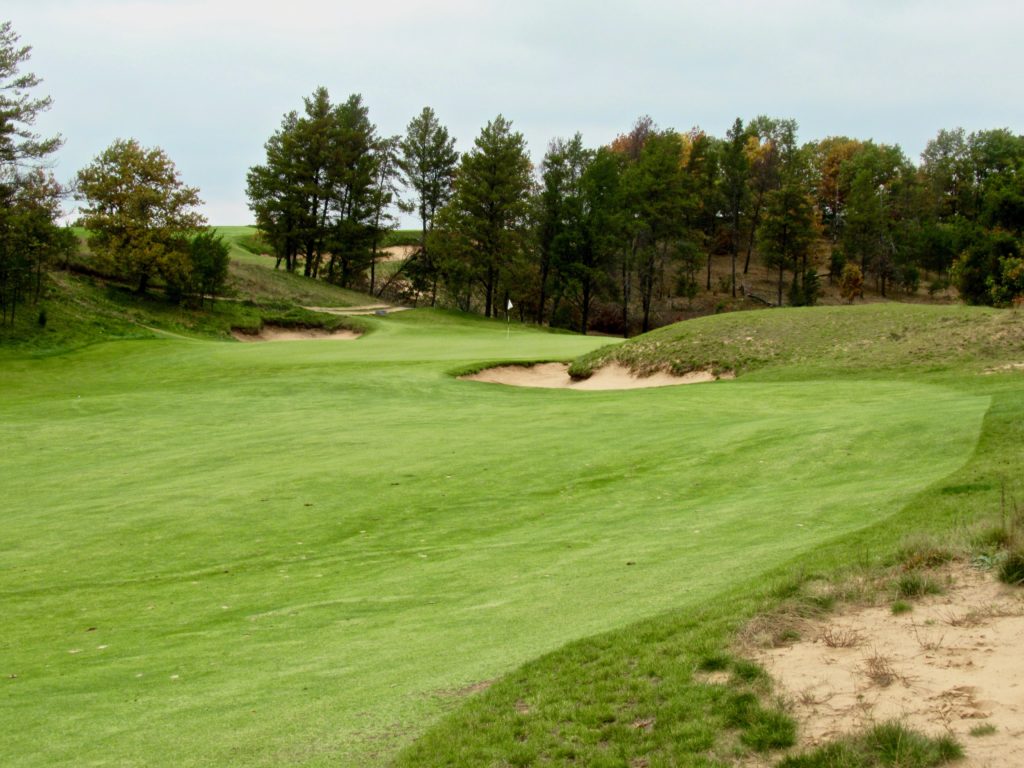
Holes like 11 and 13 rising over slightly convex fairways to ridge-top greens, and also the par-4 15th crossing a naked expanse of turf toward a green layered into a back hillside, can be nearly underwhelming at first pass but contain quiet, lovely intricacies that create pause before the more propulsive holes that follow. With these alternating architectural beats Sand Valley reads as literature rather than thriller. The design takes its time to develop themes, to surge and pull back, and doesn’t need special effects or set pieces for hooks.
At this point we need to address the elephant — actually the mammoth — in the room.
Comparisons with Mammoth Dunes will be inevitable since nearly everyone who visits Sand Valley will also play David McLay Kidd’s second course (opened in 2018) immediately before or after. Kidd chose to take his design into more accentuated terrain, tackling several of the higher dunes ridges. More notably, his wider boundaries give players the option of multiple lines to the greens, enabling them to hit extremely crooked shots yet still be able to find and play their ball, albeit likely with a poor scoring angle.

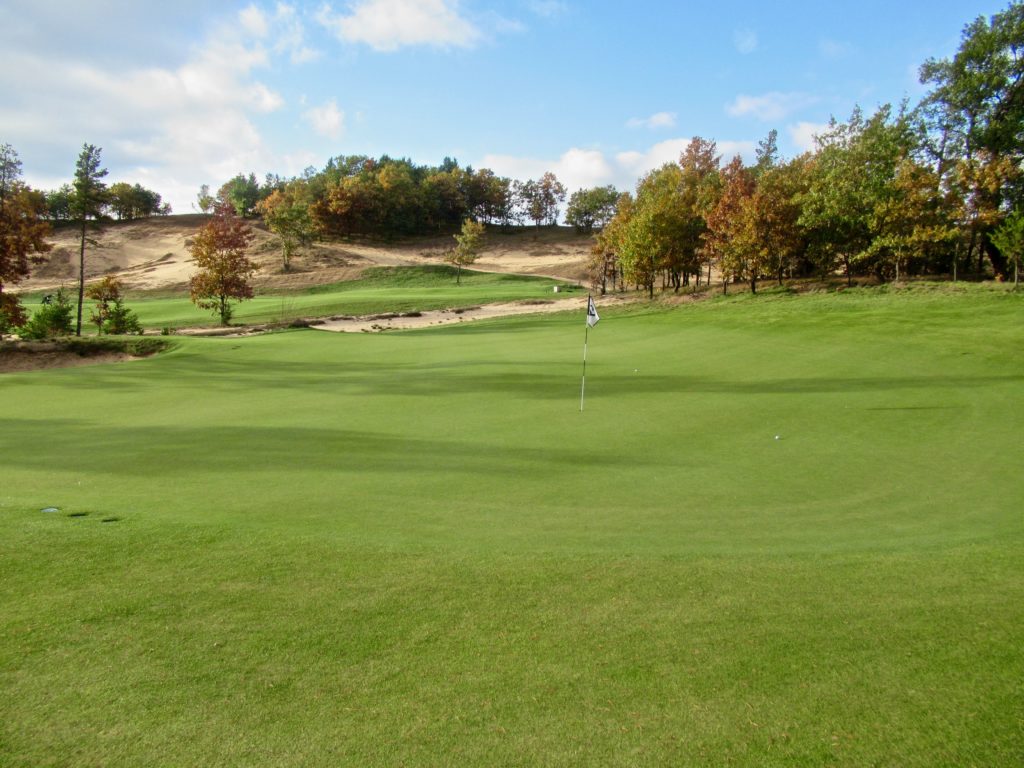
To me, however, the fundamental contrasts between the two courses are not the differences in topography or width (Sand Valley is also a very wide course). The primary departing point is the manner in which the greens at Sand Valley repel shots. Ball striking and distance control is vital since nearly every green, or portions of each, are sculpted with false edges and shoulders that deflect short and off-line shots into tight-lie subregions. Approaches that aren’t carried, or bounced, fully onto the putting surfaces can result in extremely uncomfortable recoveries.
The other profound contrast is the delightfully unfinished quality of Sand Valley’s landscaping. The holes at Mammoth Dunes, situated against epic backdrops, are total visual compositions. The shapers extended the sandscapes to the outer limits of the visual frame, often excavating and exposing the earth up and into the high treeline.
Coore and Crenshaw’s crew carried their work just beyond the grassline. The hole boundaries tend to yield to native panoramas of matted fields of grass and sand that give the course a rougher, untouched appearance, perhaps the inspiration for those older, primitive landscapes to which Mike Ke
iser originally alluded.

It’s an interesting trick that Sand Valley is at once both a milder course than Mammoth Dunes and also the more severe. Each of the characteristics that are most integral to the design (the quieter ground, the rougher around the edges appearance, the challenging green complexes and recoveries), become accentuated by the dialogue with Mammoth Dunes, the hard becoming harder, the soft softer.
But dialogue works two-ways and Sand Valley also procures benefits. Golfers might walk off Mammoth Dunes with smiles on their faces and frames around their scorecards, but they leave Sand Valley with a sense of what if. Into this mirror Sand Valley projects aspiration and an assertion that it won’t be easily obtained or overcome. You know you must play well to score but the legend is elusive, difficult to decipher. Desire and denial are powerful motivations. We want more what has not been given.
Both greatness and pleasure exists in the ineffable, and rarely in the inevitable. Players may love Mammoth Dunes, but they respect Sand Valley. (96)
Rome/Nekoosa/Wisconsin Rapids
Architects: Bill Coore and Ben Crenshaw
Opened: 2016
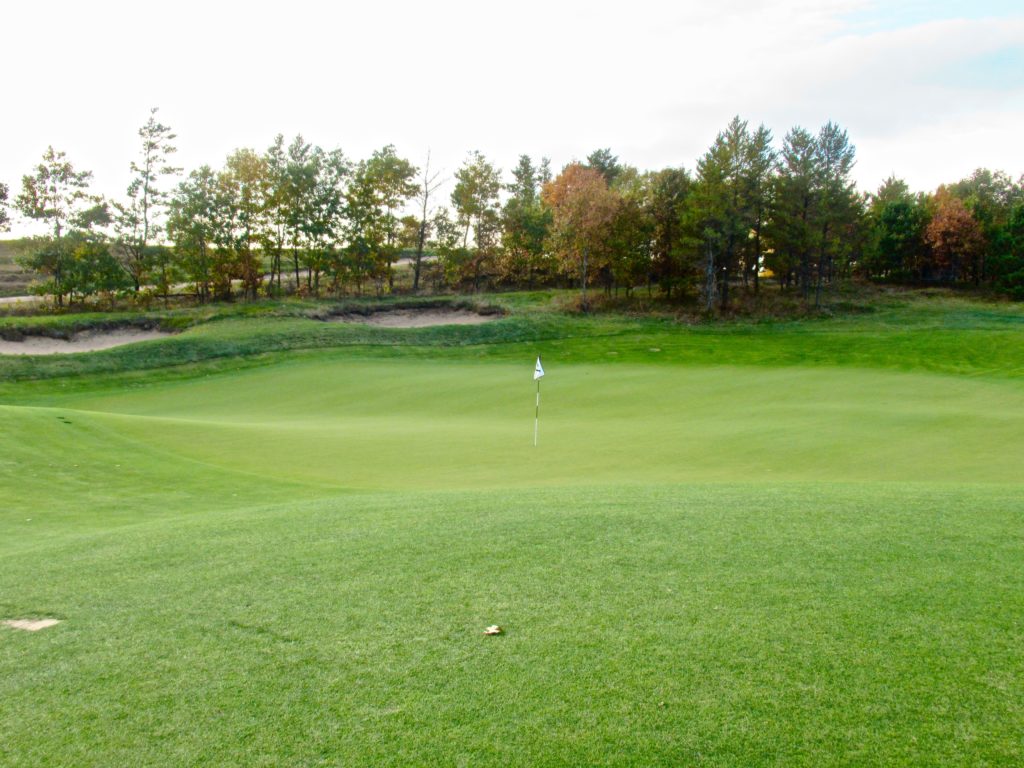
One Reply to “Sand Valley, Sun-n-Dale”